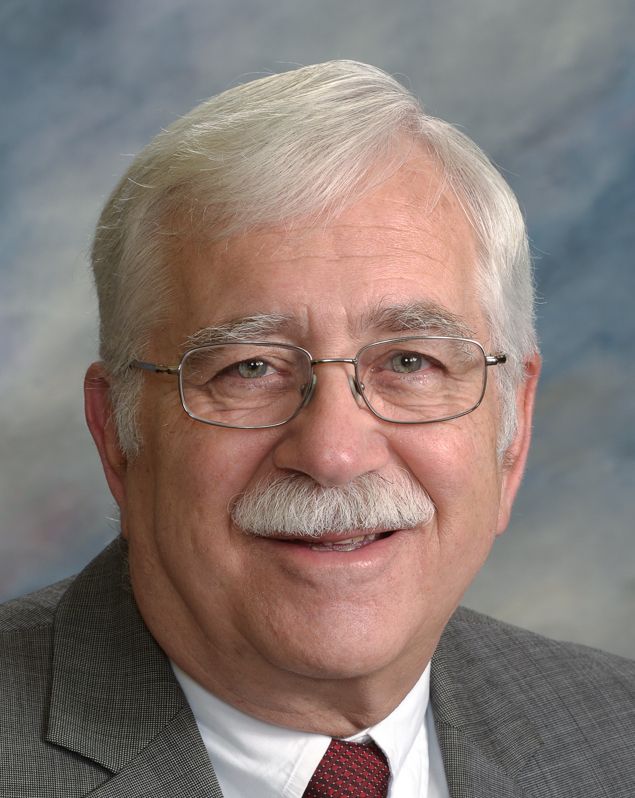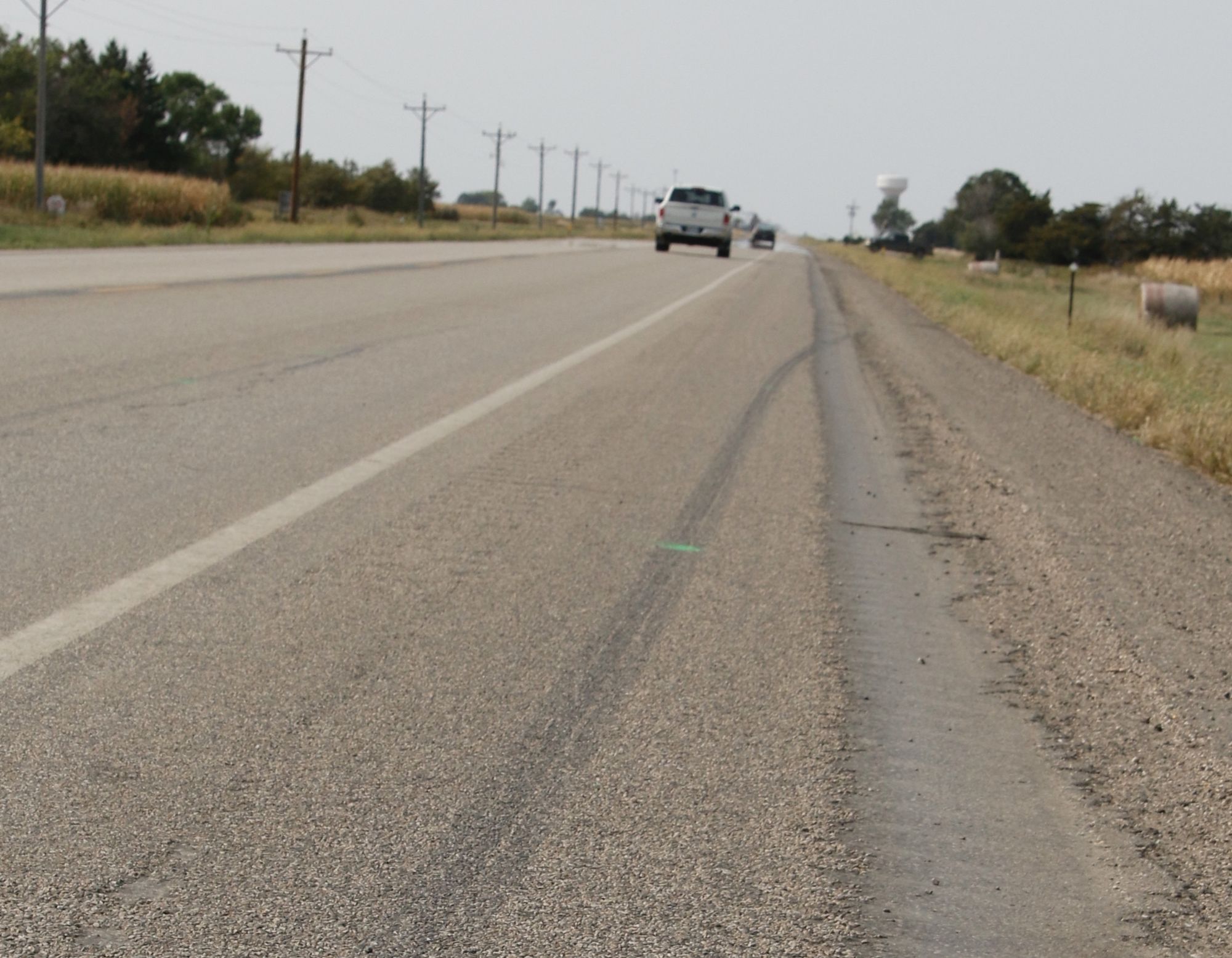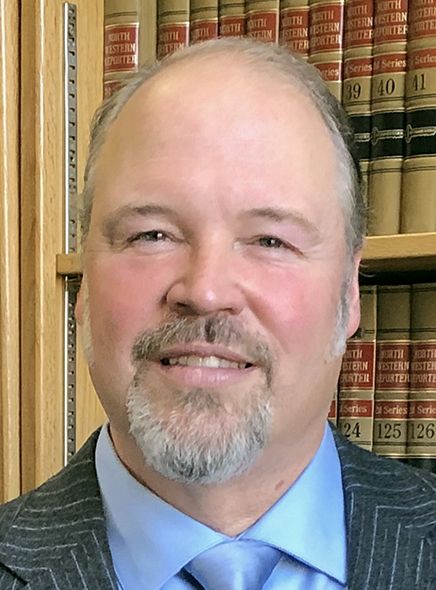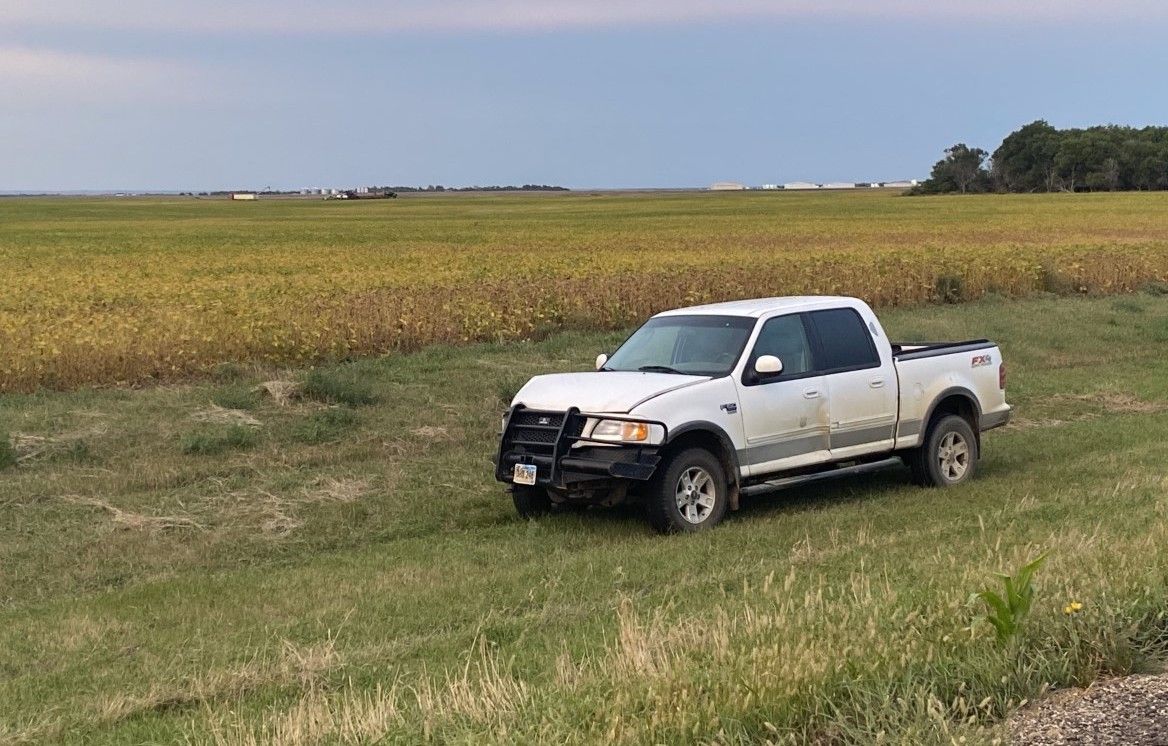South Dakota traffic laws place more responsibility on pedestrians to be on the lookout for errant drivers than they do for drivers to watch out for walkers, joggers and cyclists when it comes to assigning liability in vehicle versus pedestrian accidents.
The state criminal and civil laws are unique among Great Plains states in the high level of responsibility for safety placed upon pedestrians and in the high legal standards prosecutors or civil attorneys must meet in order to bring charges or secure damages against a motorist.
The traffic laws may come into play soon as an investigation continues into a Sept. 12 fatal pedestrian crash involving South Dakota State Attorney General Jason Ravnsborg.
If a driver in South Dakota is not under the influence of alcohol or drugs, and wasn’t obviously “reckless” according to the legal definition of the term, prosecutors face a high bar of evidence when trying to bring criminal charges against drivers who kill or maim pedestrians, said Timothy Rensch, a Rapid City defense lawyer who has defended many clients involved in vehicle versus pedestrian collisions.
Civil attorneys, too, have major hurdles to cross when bringing complaints against drivers who strike pedestrians, due to South Dakota’s unusual take on the concept of “contributory negligence,” said Scott Hoy, a Sioux Falls trial attorney who specializes in recovering damages for those injured in traffic collisions.
When it comes to traffic crashes between pedestrians and vehicles, South Dakota is the only state in the nation that asks jurors in civil lawsuits to determine if a pedestrian’s own negligence is more than “slight” compared to the driver that hit them. But there isn’t much of a legal framework for determining what constitutes a “slight” contribution to a crash, Hoy said.
“The laws in South Dakota, quite frankly, are really archaic for pedestrians and, frankly, are a bit frightening,” Hoy said.

“The laws in South Dakota, quite frankly, are really archaic for pedestrians and, frankly, are a bit frightening." -- Sioux Falls attorney Scott Hoy
As an inquiry involving investigators from three states continues into the Sept. 12 accident in which Ravnsborg struck and killed pedestrian Joseph Boever, legal experts contacted by News Watch say that bringing any kind of criminal or civil case against Ravnsborg may be difficult given what is publicly known so far about the incident.
Ravnsborg killed Boever, 55, at about 10:30 p.m. on Sept. 12 as Ravnsborg drove alone on U.S. Highway 14 just west of Highmore. Most of what is publicly known about the circumstances of the crash comes from a Sept. 14 statement sent to media outlets by Ravnsborg himself.
In his statement, Ravnsborg said he originally believed he hit a deer but never actually saw what he hit. In reality, the Attorney General had hit and killed Boever, who relatives say was likely walking along the highway toward or back from the white pickup truck he had crashed into a hay bale in the ditch earlier in the day. Boever’s pickup was located about half a mile west of where he was hit and killed by Ravnsborg.
South Dakota law requires drivers involved in collisions that result in an injury, death or property damage to immediately notify law enforcement and to render aid to someone who is injured up to and including, “the carrying of such person to a physician or surgeon for medical treatment if it is apparent that such treatment is necessary or is requested by the injured person.”
After hitting Boever, Ravnsborg said, he immediately stopped and called 911 to report that he’d been in a collision and needed help. Hyde County Sheriff Mike Volek responded to the scene, Ravnsborg said, and both he and Volek searched near Ravnsborg’s car, a 2011 Ford Taurus, trying to figure out what had been hit, but found nothing.
Sheriff elections are partisan in South Dakota; Volek is a registered Independent, according to the Secretary of State’s Office.

Rensch said that based solely on Ravnsborg’s statement, it seems unlikely that the attorney general had been drinking prior to the collision because the sheriff should have noticed any impairment and tested Ravsnborg if he suspected alcohol use. Ravnsborg said he submitted to a blood test the day after the accident, which could indicate the presence of drugs in his system, but no results have been released.
“He called the police and they came to the scene. I don’t know how you can ever contend that he was under the influence of alcohol or other drugs if he’s having a conversation with the sheriff and the sheriff’s talking to him and doesn’t notice anything wrong, doesn’t have any suspicions,” Rensch said.
Proving that Ravnsborg behaved recklessly prior to the collision — another way to bring criminal charges against him — would require a confession or clear evidence that Ravnsborg ignored other people’s safety in some way that caused the collision, Rensch said.
Vehicle versus pedestrian collisions are fairly common in South Dakota. The state saw 140 such collisions in 2019, about one every 2.5 days. Eight pedestrians were killed and 132 were injured in 2019.
So far in 2020, seven pedestrians have been killed. From 2014 to 2019, 50 pedestrians were killed on or along South Dakota roadways.
Often in South Dakota, vehicle versus pedestrian collisions don’t result in serious criminal charges being filed. On Aug. 21, 2020 for example, a 19-year-old driver killed a 46-year-old pedestrian walking along Interstate 29 north of Sisseton. Investigators determined that the pedestrian had been walking partially on the interstate shoulder and in the travel lane at night and did not press charges against the driver.
State Sen. Arthur Rusch, a Vermillion Republican, said he thinks Ravnsborg did everything right after the collision, according to Ravnsborg’s own statement. Rusch is a retired judge in Clay County, where Ravnsborg often practiced as a lawyer, and said he knows Ravnsborg fairly well. In 2018, Rusch delivered one of the speeches that officially nominated Ravnsborg to run for Attorney General as a Republican.

South Dakota law does not require drivers who hit animals on roads to verify that the animal was killed outright, Rusch said, adding that enacting such a law probably is not practical.
“You know, if they look for five minutes, is that enough? Would they have to look for 15 minutes? How do you draw up a standard on what kind of an effort you have to make,” Rusch said. “I don’t know how you can draw up a standard.”
Because Ravnsborg stopped, said he called local enforcement and tried to locate the deer he believed he had hit, it doesn’t appear that he knowingly left a dead or dying person at the scene of the collision, Rusch said.
“Even if he knew that it was a person, which he says that he didn’t, he did immediately stop and notify law enforcement,” Rusch said. “I don’t know what more he could have done.”

Criminal charges hard to bring in SD
If drugs or alcohol were thought to be a factor in the collision, Ravnsborg could face a charge of vehicular manslaughter, which carries a maximum sentence of 15 years in prison.
From a criminal defense perspective, the most important thing Ravnsborg did on the night of Sept. 12 was call Sheriff Volek to the scene, Rensch said.
In the absence of drugs or alcohol, a criminal prosecution of a driver in a pedestrian crash would likely hinge on whether the driver was acting recklessly at the time of the accident, Rensch said. Legally, the term “reckless” applies to actions that are so careless they are deemed an extreme departure from the care a normal person would take. When it comes to driving, recklessness means intentionally disregarding the potential consequences of one’s actions.
Killing someone while driving recklessly can lead to charges of second-degree manslaughter, which carries a maximum sentence of 10 years in prison. Former South Dakota Gov. Bill Janklow was convicted of second-degree manslaughter and reckless driving after he sped through a stop sign and killed a motorcyclist in 2003. Janklow was sentenced to 100 days in jail.
But the Janklow case was more clear cut than the Ravensborg fatality, Rusch said. Rusch was one of the circuit judges who filled in for the state Supreme Court justices who recused themselves when Janklow appealed his conviction. Rusch said Janklow was shown to have been speeding and clearly ran a stop sign in broad daylight and had a passenger in the car.
Rusch said it is unclear if Ravnsborg, who has several previous speeding violations, was speeding when he hit Boever, though his traveling speed is likely part of the ongoing investigation.
“The only comparison is that someone died,” Rusch said.
Proving beyond a shadow of a doubt that Ravnsborg was driving recklessly would be very difficult without a confession or hard evidence, Rensch said, even if Ravnsborg had been distracted by his cell phone or was falling asleep at the wheel.
In the case of distracted driving, prosecutors would have to prove Ravnsborg was distracted by his phone at the time of the collision, Rensch said. Even if Ravnsborg had glanced at his phone to check a text message or phone call, that doesn’t necessarily mean he was being reckless, despite a new South Dakota law making nearly any phone use while driving a Class 2 misdemeanor punishable by up to 30 days in jail and a $500 fine.
Ravnsborg said in his statement that he has turned over two cell phones to investigators.
“It’s not even close. You have to consciously and unjustifiably disregard a known risk. And I don’t think it can be said that anytime you glance at your phone, you know that you can risk killing somebody. That’s not really the way it is,” Rensch said. “The truth of the matter is many people, even with this law in place, glance at their phones for many reasons.”

If Ravnsborg had been falling asleep at the wheel, there’s not much prosecutors can do as there is no law against driving while tired in South Dakota. Prosecutors could try to show that driving while tired was reckless, but it would be difficult to prove without some kind confession from Ravnsborg, Rensch said.
Ravnsborg had driven at least 190 miles that day to and from a political event in Redfield; the day prior, he had traveled from Pierre to Rapid City and back and arrived home after 1 a.m., according to his Facebook page.
“I don’t really see fatigue as the $64,000 answer,” Rensch said. “Unless somebody’s saying, ‘I was so tired I just kept falling asleep,’ and things like that. It depends on what somebody says, but I don’t think fatigue is a person’s way into a criminal conviction.”
There are many reasons that drivers drift within the driving lane or even onto a highway shoulder and very few of those reasons are criminal, Rensch said. Ravnsborg could have drifted to the right if he was looking off to the left when he hit Boever, Rensch said.
“You can drift the other way if you reach down and mess with the radio or you are adjusting the air conditioner or whatever a person might do. All kinds of things can happen which do not turn (a collision) into a crime,” Rensch said
But just because an action wasn’t reckless according to the law doesn’t necessarily mean that it wasn’t negligent, which opens the door to a potential wrongful death lawsuit in civil court.
“I know that the violation of a safety statute — that would be texting while driving or distracted driving or something like that — could be utilized to establish negligence,” Rensch said.

Civil lawsuits difficult to win in SD
Bringing a wrongful death lawsuit against Ravnsborg for Boever’s death is possible, but it would be tough to win, legal experts said. South Dakota laws regarding liability in vehicle versus pedestrian collisions were written more to protect drivers than walkers or bicyclists, said Hoy, the Sioux Falls trial attorney.
Because there is no legal formula for determining “slight” negligence, jurors in pedestrian versus vehicle lawsuits are asked to decide for themselves what constitutes slight negligence and whether the pedestrian’s actions meet or exceed the jury’s definition.
“You’ve always got a jury saying, ‘Well, if this guy has anything that he’s partly responsible for, then he can’t recover,’ and that’s what makes it a tough deal,” Hoy said.
On a basic level, South Dakota law makes pedestrians more responsible for looking out for drivers than making drivers responsible for watching out for pedestrians, even though motorists are protected by thousands of pounds of steel, Hoy said.
In most states, including the six states that border South Dakota, jurors are tasked with determining how negligent each party was leading up to a crash. Then the jury has to determine what their verdict would be if only the defendant had been negligent. Once they’ve figured out what their verdict would be, they then reduce the award by the percentage that they determined the plaintiff had been negligent.
In South Dakota, if a plaintiff’s contribution to a crash is determined to have been more than “slight,” they cannot be awarded damages.
If a pedestrian involved in a crash with a vehicle were to sue for damages in Wyoming, Minnesota, Montana, Iowa, Nebraska or North Dakota, for example, and was awarded $100,000 in total, but was determined to have been 25% negligent, the final award would be $75,000.
In Boever’s case, South Dakota law requires pedestrians on highways to walk on the left side of the road, against traffic. Walking against traffic allows the pedestrian to see what is coming their way and because they’re moving slower, pedestrians have more time to react.
Boever’s cousins Victor and Nick Nemec, who may have been the last people to see Boever alive, believe he was walking with traffic in the westbound lane of U.S. 14, meaning he would have been violating state law.
If a jury determined Boever’s actions contributed more than slightly to the collision, whether Ravnsborg was illegally distracted or falling asleep, there’s a good chance that Boever’s family would not be able to recover any damages, Hoy said.
Three recent pedestrian fatalities
Between 2014 and 2019, 50 pedestrians have been killed by vehicles on South Dakota roadways. Many, but not all, of the deaths have occurred in rural areas. Often, no charges are filed against the drivers. Here are three recent examples of fatal vehicle versus pedestrian crashes in South Dakota and the legal outcomes.
Sisseton, August 2020
A pedestrian was killed Aug. 21, 2020 on Interstate 29 north of Sisseton when he was struck by a 2007 GMC Yukon.
Crash investigators determined that the pedestrian, identified as 46-year-old Cornelius Kirk of Rice Lake, Wisc., had been walking with traffic, partially in the interstate driving lane and partially on the shoulder, when he was struck and killed.
The 19-year-old driver of the GMC was not charged. The South Dakota Highway Patrol investigated the crash.
Tripp County, July 2020
On July 4, 2020, a 41-year-old pedestrian was killed while walking on the shoulder of U.S. Highway 18 about 13 miles west of Winner, S.D.
According to a police affidavit filed after the crash, two witnesses saw a car crash into a person, later identified as Kenneth Beard, on the highway at about 2:30 a.m., and then drive off. The witnesses called 911. Highway Patrol troopers dispatched to the crash were able to locate a 2018 Mazda3 that had damage to its driver side door and had grass wedged in its door seam. The Mazda3’s driver, identified as Cleveland Kills In Sight, Jr., 38, was arrested and charged with hit-and-run resulting in death, and driving under the influence. A charge of vehicular manslaughter was added against Kills in Sight Jr. after an investigation into the crash.
Sturgis, Oct. 2019
On Oct. 28, 2019, a 68-year-old Sturgis man died when he was run over by a pickup as he tried to cross a street in a crosswalk.
According to news reports, the crash happened at about 8:30 a.m. Gary Vandenberg, 59, was driving his 2014 Chevy pickup west on Sherman Street and stopped at the intersection of Harley Davidson Way before driving through the intersection and hitting Jerry Watkins.
Watkins was taken to Sturgis Regional Hospital where he died from his injuries. Vandenberg was cited by the Sturgis Police Department for having an obstructed windshield.




